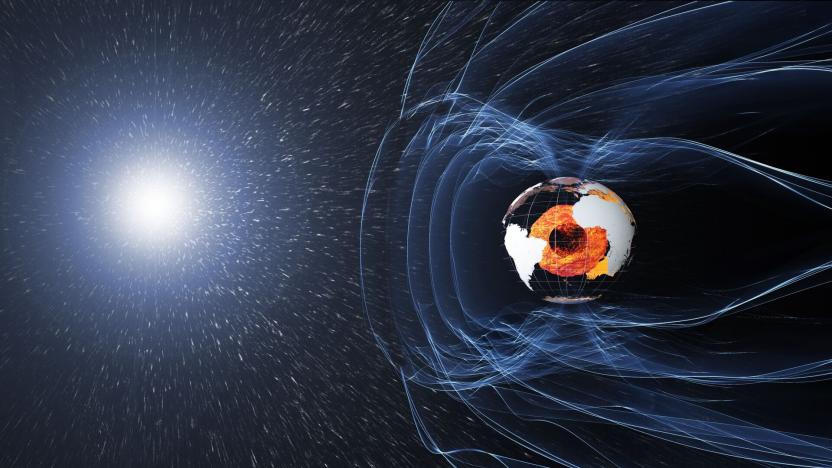magnetic field
Latest

Scientists find evidence of a new layer at the Earth's inner core
Scientists have found signs that Earth has another layer — a metal ball inside the inner core.

Listen to the eerie sounds of a solar storm hitting the Earth's magnetic field
Scientists converted data from the ESA's three Swarm satellites into ethereal audio.

A magnetic helmet shrunk a deadly tumor in world-first test
Scientists have created a helmet that uses magnetic therapy to reduce deadly brain tumors.

That's hot: Heat-based recording could boost magnetic drive speed, performance
Magnetic fields are pretty nifty for levitating stuff, carving sponge-like thingamajigs and, of course, data storage. But an international team led by the University of York in the UK has figured out a way to replace magnetic fields for the latter by using ultra-short heat pulses instead. Conventional thinking typically dictates that an external magnetic field is required to store data on a magnetic medium. By using heat, however, researchers were able to record terabytes of information per second in a way that is also more energy-efficient compared to current hard drive technology. As for the time it'll take for the tech to make it to market, well, we have a feeling it won't be as fast.

Levitating superconductor floats within a magnetic field so you don't have to (video)
What happens when you douse a superconducting urinal cake with liquid nitrogen? We haven't given it too much thought, to be honest, though we're guessing it would look a lot like the "levitating" disc pictured above. Developed by researchers at Tel-Aviv University, this device is actually a superconductor hovering over a "supercooled" magnet. While locked within the magnetic field, it can rotate around a vertical axis, turn upside down or do laps around a track -- all thanks to a phenomenon that Tel-Aviv's physicists call "quantum trapping." We're not really sure what that entails, but we do know that the results are pretty incredible. Check them out for yourself, after the break. [Thanks to everyone who sent this in]

Japan sends a ribbon into space, asks it to test the magnetic currents
Tether propulsion seems to be the OLED of the spacefaring world, carrying as it does a lot of promise but seemingly never ready for the big time. The fundamental premise is as simple as it is appealing -- a long strip of metal stretched out in space can theoretically exploit the Earth's magnetic field to maneuver itself without expending any fuel of its own. This is done by sucking up ionospheric electrons at one end and, predictably enough, spitting them out at the other, allowing current to flow through the tether. Japan's aerospace agency has recently shot off a testing vehicle for just this theory, a 300 meter-long, 2.5cm-wide ribbon, which has managed to successfully generate a current. No thrust-measuring equipment was on board and it's still very early days, but hey, there's at least the chance that one day satellites will all sprout long, elegant tails to power their way through the sky... and into our private lives.




